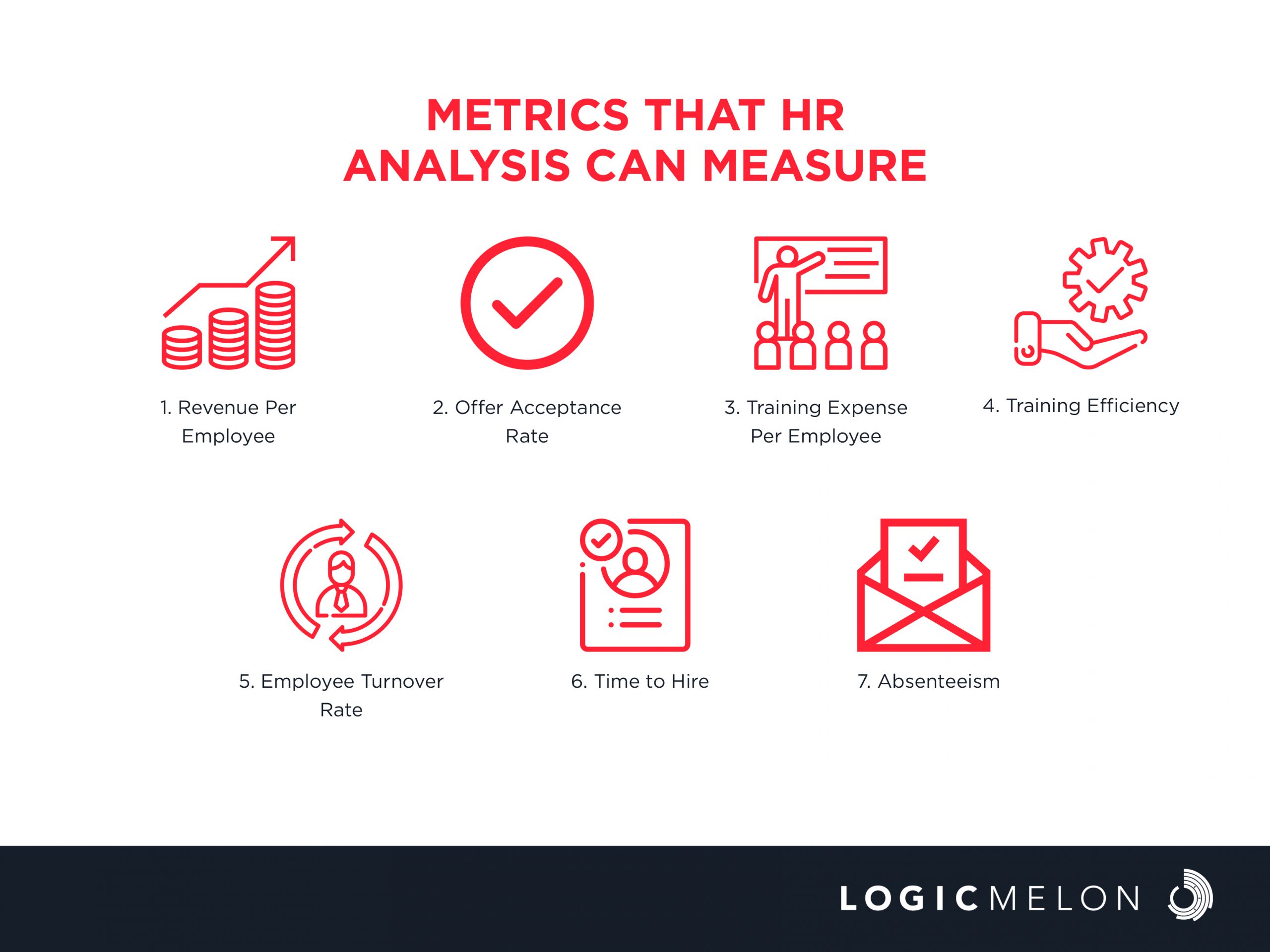Guide to HR Data Analysis
Every single role in the HR department would need to make multiple decisions and make those decisions effectively. They need to have a proper analysis of their data. HR data analysis helps them to make such decisions.
Implementing an HR data analysis is a data-driven approach to business development, recruitment, talent management, and other aspects of the business help to make informed decisions so your business can grow in the right direction.
What Is HR Data Analysis?
HR data analytics (also known as people analytics) is the application of talent data to solve business problems. These insights help you to make intelligent decisions for your organisation.
It helps your organisation measure your efforts over HR metrics, and corrects your actions to drive the desired results.
A data-driven approach for your human resource efforts helps you provide insights into various operational areas of your company but it also helps to test the effectiveness of new HR policies.
Metrics that HR Analysis Can Measure
HR metrics help you measure your efforts and their results throughout your company.
While these metrics might vary with the organisation, certain metrics are necessary regardless of the nature of your business.
Using HR data analysis tools, you can track these metrics easily.

Revenue Per Employee
Revenue is an important measure when it comes to running a business. The revenue per employee is calculated by dividing the company’s total revenue by the number of employees in the organisation.
Offer Acceptance Rate
Job offers that are formally accepted by candidates divided by the total number of job offers extended gives you the offer acceptance rate. A low acceptance rate indicates a problem with the talent acquisition strategy.
Training Expense Per Employee
The training expense per employee is calculated by dividing the total training budget by the number of employees who receive training. This is necessary to ensure the effectiveness of the training strategies and budget.
Training Efficiency
This is also a metric that helps measure the training program’s effectiveness. It is calculated by consolidating multiple data points, such as performance improvement, employee role transition, and test scores.
Employee Turnover Rate
The employee turnover rate is a necessary factor to consider for your employee retention strategy. The two classifications for employee turnover rate are voluntary and involuntary employee turnover. To calculate this, take the number of employees who have left the organisation voluntarily or involuntarily, and divide it by the number of employees.
Time to Hire
This is time an organisation takes from the moment they post a job opening to the day an employee fills that open position. Robert Half’s research has found that a whopping 57% of job seekers lose interest in a job if the hiring process is lengthy. A longer time to hire indicates that the talent attraction strategy and the recruitment process need improvement.
Absenteeism
Absenteeism is a metric that is obtained by dividing the number of absent days for an employee by the total number of working days. It serves as an indicator of employee engagement and well-being.
Process of HR Data Analysis
To implement an HR data analysis in your business plan, execute the following steps:
1. Come Up with a Plan
The first step is to come up with a plan for the requirements of the data analysis. The best action is to ask the stakeholders about their conditions and plan their needs accordingly.
Ensure that you also add critical success factors necessary for your business. Think of long-term goals that define your success and factor them into the plan.
2. Hire Data Scientists
Data scientists help you understand the process and involve HR professionals in the analysis process. They possess the necessary skills to implement HR data analysis into your business seamlessly. Data scientists can help report the data in such a way that it is easily understandable by the stakeholders.
3. Ensure Legal Compliance
HR managers, executives, and everyone involved in processing the employee data should ensure that they comply with the rules and regulations laid down by their region. It is best to seek counsel from a legal adviser when in doubt. Since the data is about the employees, it is better to take all the necessary precautions.
4. Collect Data
To start with your HR data analysis process, you need to have the necessary data based on the requirements you have laid down. The data can come from various points. For instance, already existing data is obtained from employee records, company records, HR tools, and applicant tracking systems. You can run a survey for new data and ask employees to take an engagement test.
5. Analyse Data
Now that you have collected the data, it is time to analyse them so the end result meets the stakeholders’ requirements, and gives you the proper insights to make future business decisions.
6. Report Data
After analysing the data, you need to report it so the stakeholders can make sense of it. If certain areas need additional investigation, ensure that you analyse them the next time. Sometimes, the data collected might not have been sufficient. In such cases, update the process and analyse them again for better results.
7. Evaluate
After reporting the data, evaluate the entire process from the beginning and find areas for improvement. Once you have defined the steps that need extra attention, iterate the process with the upgrades.
Pros of HR Data Analysis
The following are the pros of HR data analysis:
- The data-driven approach helps you reduce the gut-feeling method, and helps you make an informed decision backed by data.
- It helps employee retention strategies, and gives you a reason for employee turnover.
- Employee engagement can be improved after analysing the company culture, co-worker engagement, and customer interaction to find areas for improvement.
- Rather than comparing with an ideal candidate profile and looking for new employees, you can improve the recruitment process by considering the required skill set.
- You can stay ahead of the trends using predictive data analysis, and gain an edge over your competitors.
Cons of HR Data Analysis
The following are cons of HR data analysis:
- The HR department needs people who can handle large sets of data, and can help refine the analysis process.
- A single organisation can have multiple reporting systems, making it challenging to aggregate and report data.
- Organisations need proper resources to collect and organise data for efficient data analysis.
- Handling such a volume of delicate data could cause legal complications in various regions.
Frequently Asked Questions
1. What is HR data analysis?
HR data analysis is the process of collecting and analysing data to make more informed decisions for the development of the business, and with all aspects relating to the human resource department.
2. What are the types of employee turnover?
There are two types of employee turnover, voluntary and involuntary. It is classified based on how the employee leaves the organisation.
3. What are some of the necessary metrics to track using HR data analysis?
The necessary metrics to keep track of are:
- Revenue per employee.
- Offer acceptance rate.
- Training cost per employee.
- Time to hire.
- Absenteeism.
- Training efficiency.
- Employee turnover rate.
Final Thoughts
Understanding the HR data analysis process can help you create and streamline your company’s data-driven approach. Trusting your gut feeling hardly ever works out at this time and age. Making better decisions for the company needs to have proper analysis behind it.
LogicMelon
Award-winning recruitment software that will find, attract, hire and analyse the way you want to work. At LogicMelon, we have experienced software recruitment marketing specialists to help you build effective recruitment solutions supported by the best customer service you’ll find anywhere!
Email: sales@logicmelon.com or call LogicMelon (UK) +44 (0) 203 553 3667 (USA) +1 860 269 3089
Guide to External Sources of Recruitment: Meaning, Advantages
External sources of recruitment are hiring qualified candidates from outside of the organisation by analysing the requirements.
10 Critical Thinking Interview Questions To Ask In Your Interview
Critical thinking interview questions gather information about the candidate’s problem-solving skills and capacity for logical argumentation.
AI. Intelligent Content Creation or Lazy Scraping?
The debate has started into the legal and legitimate use of this technology, after all, if it saves you hours of work and the end product.


